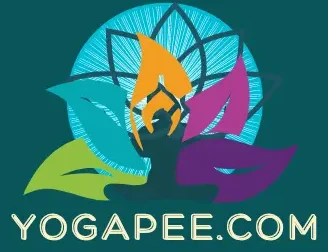Introduction
Adho Mukha Svanasana, commonly known as Downward Dog Pose yoga, is one of the most recognizable and fundamental yoga postures.
The name comes from the Sanskrit words Adho, meaning downward, Mukha, meaning face, Svana, meaning dog and Asana, meaning posture.
This pose is often used as a transitional posture but also serves as a powerful full-body stretch on its own.
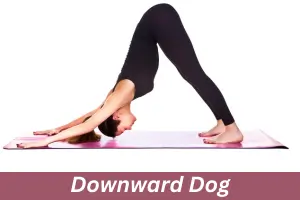
In the pose, the body forms an inverted “V” shape, resembling a dog stretching forward.
It engages multiple muscle groups, improves flexibility, and is often considered a resting pose in Vinyasa and Ashtanga yoga sequences.
Whether you’re a beginner or a seasoned yogi, Downward Dog pose yoga is an essential posture to help build strength, increase awareness, and balance the body.
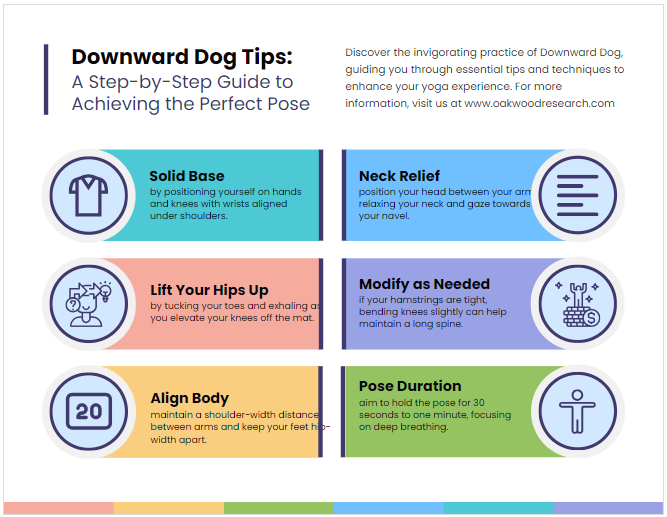
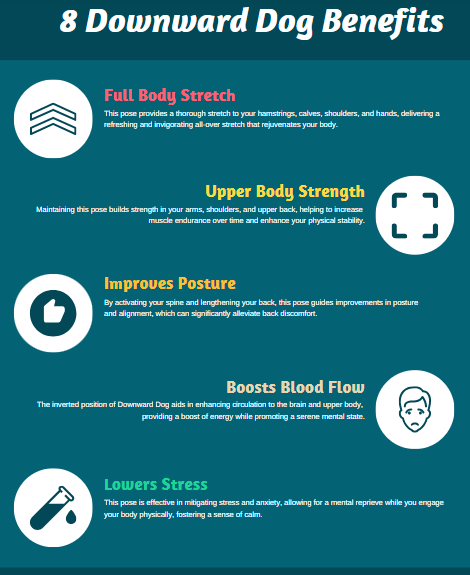
Steps to Perform Adho Mukha Svanasana (Downward Dog Pose Yoga)
- Start in Tabletop Position: Begin by getting on your hands and knees. Align your wrists directly under your shoulders and your knees under your hips. Keep your fingers spread wide for a solid base.
- Lift Your Hips: Tuck your toes under and on an exhale, lift your knees off the floor. Slowly straighten your legs and push your hips towards the ceiling to form an inverted “V” shape with your body.
- Align Your Body: Keep your arms shoulder-width apart and your feet hip-width apart. Press your hands firmly into the mat and lengthen through your spine, extending your tailbone towards the sky.
- Relax the Neck: Keep your head between your upper arms and relax your neck. Your gaze should either be towards your navel or the space between your feet.
- Adjust the Pose: If your hamstrings feel tight, you can slightly bend your knees to keep the spine long. With each exhale, try to straighten your legs and lower your heels toward the mat.
- Hold the Position: Stay in this pose for 30 seconds to 1 minute, breathing deeply. Keep your body engaged, and press evenly into both hands and feet.
- Release: To exit the pose, lower your knees gently back onto the mat and return to a tabletop position or transition into another yoga posture.
Benefits of Adho Mukha Svanasana (Downward Dog Pose Yoga)
- Full-Body Stretch: This pose stretches the hamstrings, calves, shoulders, and hands, providing a deep and rejuvenating full-body stretch.
- Strengthens Arms and Shoulders: Holding the pose requires strength in the arms, shoulders, and upper back, which builds endurance over time.
- Improves Posture: By engaging the spine and lengthening the back, this pose helps to improve posture and alignment, reducing back pain.
- Boosts Circulation: The inverted nature of Downward Dog pose yoga helps promote blood flow to the brain and upper body, energizing the body and calming the mind.
- Calms the Mind: This pose can reduce stress and anxiety, helping you relax mentally while staying active physically.
- Enhances Flexibility: With regular practice, this pose increases flexibility in the hamstrings, calves and spine.
- Improves Digestion: By stimulating the abdominal organs, this pose can help enhance digestion and detoxification.
- Strengthens the Core: Engaging your core muscles in this pose helps to build core stability and balance.
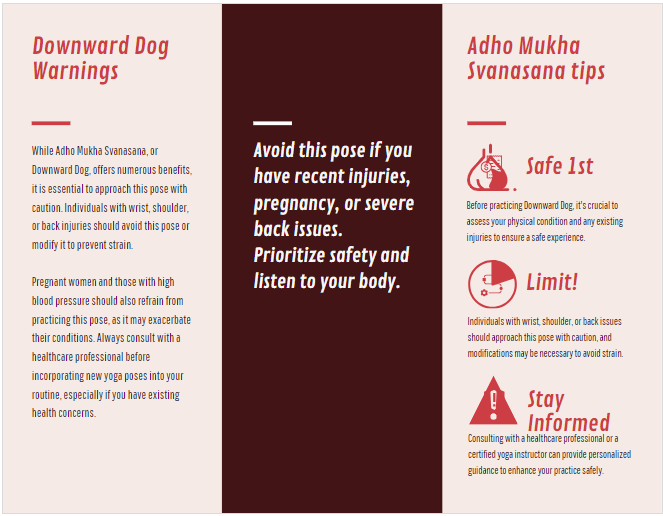
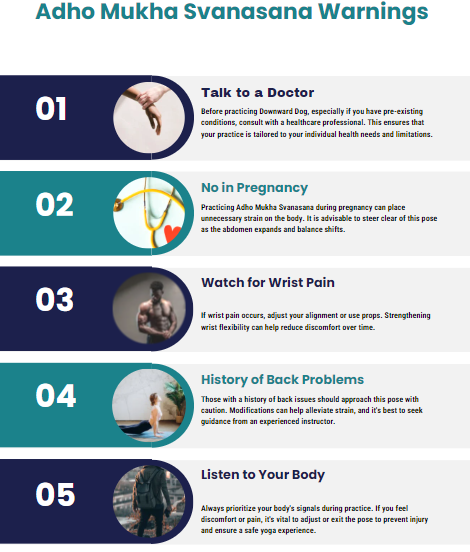
Precautions and Contraindications for Adho Mukha Svanasana (Downward Dog Pose Yoga)
- Wrist or Shoulder Injuries: Those with wrist or shoulder injuries should approach this pose with caution, as the weight-bearing nature of the pose can aggravate these areas.
- High Blood Pressure: Since this is a mild inversion, individuals with high blood pressure or heart issues should consult with a doctor before practicing this pose.
- Pregnancy: Pregnant women, especially in the later trimesters, should modify or avoid this pose as it can put pressure on the belly.
- Hamstring or Calf Injuries: If you have tight or injured hamstrings or calves, you can keep your knees slightly bent to avoid strain.
- Glaucoma or Eye Conditions: The inversion aspect of this pose increases pressure in the eyes, so it should be avoided by those with glaucoma or other serious eye conditions.
- Low Blood Pressure: People with low blood pressure may feel dizzy when coming into or out of the pose, so practice mindfully and slowly.
Conclusion
- Adho Mukha Svanasana or Downward Dog Pose yoga, is an essential yoga posture that provides a wide range of benefits for both the body and mind.
- It stretches, strengthens, and tones key muscle groups while promoting relaxation and mental clarity.
- Although it may seem challenging at first, consistent practice will help build endurance, flexibility, and balance.
- Whether you’re looking to increase flexibility, improve posture or reduce stress, Downward Dog yoga is a highly beneficial pose that can be easily incorporated into any yoga sequence.
- It is a powerful way to connect breath with movement, fostering a sense of calm and centeredness in both your yoga practice and your daily life.
